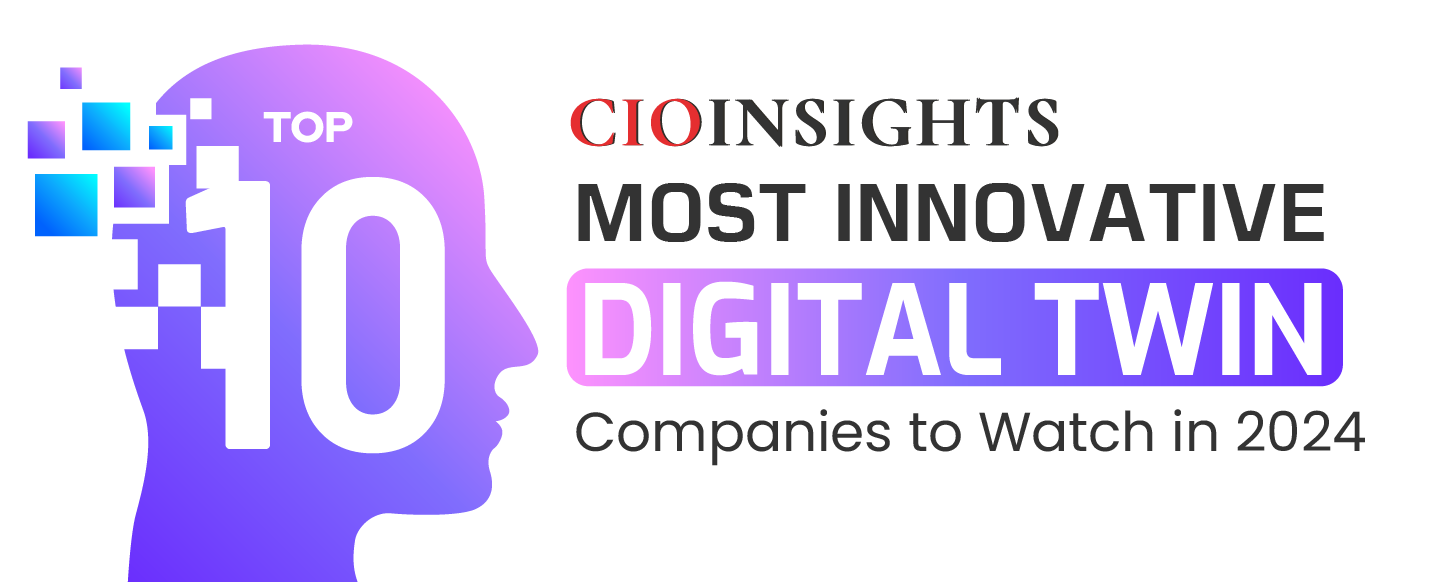Top 10 Most Innovative Digital Twin Companies To Watch In 2024

.jpg)
As an industry leader seeking to optimize operations, you know the value that physics-informed AI can provide. With Geminus, you can now harness this powerful technology to achieve breakthrough improvements. Geminus leverages proprietary techniques to develop high-fidelity digital twins, compressing AI development timelines from months to weeks. By encoding the laws of physics into machine learning models, Geminus delivers accurate, explainable AI to transform industrial automation and operations. With innovative partnerships, like the collaboration with SLB to revolutionize the energy industry, Geminus enables organizations to rapidly realize the promise of AI. Read on to learn how you can achieve rapid gains by harnessing the power of physics-informed AI through the Geminus approach. Physics-informed AI leverages knowledge of physical systems and processes to accelerate and improve AI modeling. Rather than relying solely on data to train AI models, physics-informed AI techniques encode expert knowledge about physical constraints, equations of motion, constitutive relations and system architectures into the models. Constraint-based learning. Constraints on possible system behaviors, dynamics and parameters are encoded into the AI model. Constraints prune the search space, guiding the model toward physically plausible solutions and accelerating learning. For example, constraints can ensure conservation of mass, energy and momentum are satisfied. Equation-based learning. Key equations describing system dynamics, such as equations of motion, are embedded in the AI model. The model learns by estimating parameters in the equations to match observations. This requires far less data than pure data-driven approaches. Parameters have clear physical meaning, providing interpretability. Architecture-based learning. Knowledge of system architecture, connectivity and topology is encoded, so the AI model learns the behavior of each component and how they interact. The architecture constrains the model to plausible system-level behaviors. This is particularly useful for complex engineered systems. Physics-informed AI enables breakthrough performance with limited data by incorporating expert knowledge into AI models. The resulting models are more robust, generalizable and interpretable than pure data-driven models. They can effectively represent the complex dynamics of real-world physical systems. This approach is enabling transformative applications of AI across many industries. Geminus creates digital twin models of industrial systems using physics-based simulations. These physics-informed AI models are trained on the physical properties and behaviors of systems to develop a robust understanding of operations. By incorporating the laws of physics, chemistry and engineering fundamentals, the AI models can make accurate predictions about system performance, even with limited data. The use of physics-based simulations and digital twin models allows Geminus to compress the timeframe required for developing and deploying AI solutions. Rather than needing months of operational data to train traditional machine learning models, Geminus can leverage first principles to jumpstart the training process. This allows their AI systems to reach full operational capability in a matter of weeks rather than months. To demonstrate the power of their physics-informed AI approach, Geminus has partnered with SLB, a global leader in oilfield services, to apply their technology to improving operations in the energy industry. By creating digital twins of critical equipment like blowout preventers, Geminus aims to help SLB enhance safety, optimize performance and increase automation across oil and gas operations. This partnership highlights the broad applicability of physics-based AI to transform industrial practices. By incorporating an understanding of physics and engineering into AI, Geminus believes they have developed a breakthrough approach that will shape the next generation of autonomous systems. Their vision is for AI models grounded in the physical world that can make robust, real-time decisions to optimize performance, reduce waste and increase productivity. The result may be a new era of intelligent, self-sufficient industrial infrastructure. Geminus physics-informed AI is particularly useful for optimizing operations in oil and gas. Their technology can build digital twins of assets like offshore platforms, refineries, and pipelines. These AI models incorporate the physical properties and behaviors of the systems to enable autonomous control and optimization. For example, Geminus has partnered with Schlumberger to build digital twins of offshore production platforms. By using physics-informed AI to model the complex interactions on the platform, the technology can optimize production scheduling, reduce unplanned downtime, and decrease operational costs. In manufacturing, Geminus approach can be applied to build digital twins of assembly lines, industrial equipment, and full factories. The AI incorporates knowledge of how the mechanical, electrical, and software components of the systems interact to enable predictive maintenance, improved quality control, and optimized performance. Their sparse data techniques require limited historical data to build accurate models, accelerating the time to deploy AI. For power generation, Geminus can create digital twins of systems like turbines, generators, solar panels, and power grids. Their physics-informed AI models the complex physical relationships between temperature, pressure, vibration, and other factors to optimize performance and reliability. The technology enables operators to run power generation assets at maximum efficiency while predicting and preventing failures. It can also help integrate renewable energy into the grid by modeling how the system will respond to fluctuations in power from solar and wind. In summary, Geminus leverages physics-informed AI and machine learning to build digital twins of industrial systems across sectors like oil and gas, manufacturing, and power generation. Their technology optimizes operations, reduces costs, and accelerates the adoption of AI for autonomous industrial control. By incorporating the physical properties of assets into machine learning models, Geminus provides a breakthrough approach to optimize complex industrial operations. Geminus physics-informed AI approach leverages system data and first principles to accelerate the development of AI models, compressing the time required to build and deploy models from months to weeks. By incorporating an understanding of core physics into its AI, Geminus can work with limited data to quickly construct models that provide value. Improved Performance The inclusion of physics knowledge in Geminus AI models leads to improved performance over traditional data-driven techniques alone. Physics-informed AI models have a more complete, accurate representation of the underlying system dynamics, enabling better predictions, especially in edge cases. The hybrid AI is also more robust to changes in the system or environment. The physics-informed approach requires significantly less data to develop and tune models compared to standard machine learning techniques. By relying on physics in addition to data, Geminus can work with limited historical data and sparse sensor coverage to build high-quality models. This can reduce costs associated with extensive sensor networks and data historians. Models that incorporate physics are more transparent and explainable. The inclusion of first principles means that model predictions and behaviors can be traced back to concrete, causal relationships in the physical system. This stands in contrast with typical black-box AI models whose complexity obscures their inner workings. Explainable AI is increasingly important for critical applications where trust and accountability are priorities. The benefits of physics-informed AI are enabling Geminus and its partners to build the next generation of intelligent industrial systems. By combining physics and AI, Geminus aims to accelerate operations, improve performance, and reduce costs for companies across industries. Harnessing the power of digital twins, Geminus is transforming operations and unlocking new value. Geminus partners with leading companies in the energy industry to deploy their physics-informed AI technology. Their partnership with Schlumberger aims to transform operations in the oil and gas sector. ### Schlumberger Partnership Geminus and Schlumberger have partnered to bring physics-informed AI to the oil field. Schlumberger will integrate Geminus technology into their DELFI cognitive E&P environment. The partnership will focus on optimizing production operations and minimizing non-productive time. The energy industry is a prime candidate for the application of physics-informed AI. There are countless sensors and streams of data in the oil field, but much of that data goes unused. Geminus technology can leverage these data to build digital twins of energy assets like wells, pumps, and pipelines. These digital twins then enable new capabilities like predictive maintenance, process optimization, and automation. For example, a digital twin of an oil well could detect when a pump is underperforming and optimize its operation to maximize production. It could also predict when a part might fail and enable proactive maintenance. The benefits of these capabilities are substantial, enabling increases in production, reductions in downtime, and improvements in safety and environmental compliance. Geminus partnership with Schlumberger and their work in the energy industry demonstrate the potential impact of physics-informed AI. By pairing deep subject matter expertise with AI, Geminus is poised to transform operations and unlock new value across industrial sectors. Their technology provides a glimpse into the future of augmented operations, where AI and human experts work together to optimize complex systems. By leveraging physics-informed AI, Geminus is pioneering a new approach to operational efficiency and safety. Their technology compresses the time needed to develop effective AI models from months to mere weeks. Through partnerships with industry leaders like SLB, Geminus is proving the immense value of digital twins powered by physics-based machine learning. This novel use of sparse data techniques and real-world physics holds tremendous potential to transform industrial operations across sectors. Geminus represents an exciting frontier in AI - one that you should follow closely as their innovations continue to push boundaries. When physics meets AI, the possibilities are endless.Harnessing Physics-Informed AI: The Geminus Approach
Understanding Physics-Informed AI
How Geminus Leverages Physics-Informed AI
Digital Twin Models
Compression of Time
Partnership with SLB
The Future of AI
Real-World Applications of Geminus' Technology
Oil and Gas
Manufacturing
Power Generation
The Benefits of the Geminus Approach
Reduced Time to Deploy AI Models
Less Costly Data Requirements
Increased Explainability
Geminus Partnerships and Industry Impact
Impact on the Energy Industry
Conclusion






